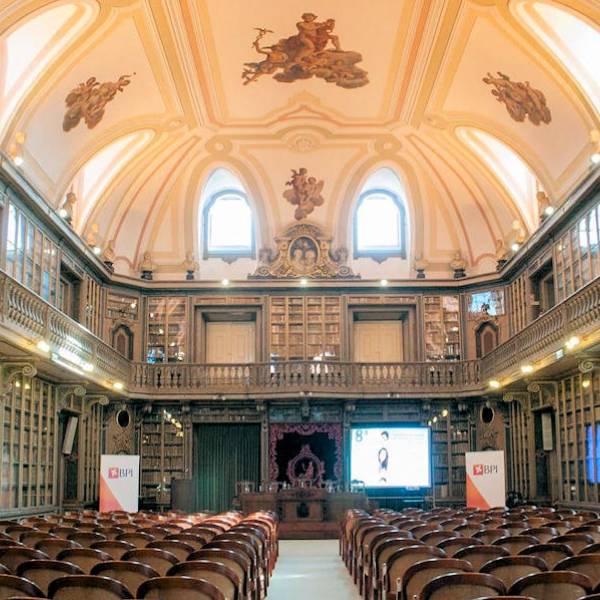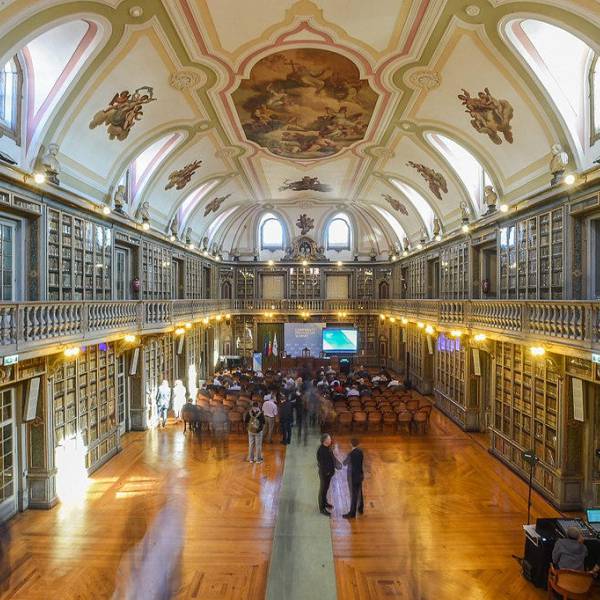The library houses an extensive collection encompassing scientific works by renowned authors such as Johannes Kepler, Isaac Newton, Carl Linnaeus, and Georges-Louis Leclerc, among others. It also includes works on philosophy, theology, literature, and art, featuring incunabula, manuscripts (around 3,000 exemplars), periodicals, and an invaluable collection of rare books dating from the 14th to the 16th centuries. The library comprises approximately one million species of knowledge, not only from Portuguese sources but also from diverse origins, including notable Islamic and Chinese contributions, as well as works from Spain and other European countries.
Among its remarkable holdings are ancient treasures, including a 12th-century parchment with a donation from Queen D. Teresa and her son D. Afonso Henriques, as well as works from the 14th, 15th, and 16th centuries. The Baroque and Neoclassical periods are equally well-represented, particularly through the volumes that were part of the Library of the Convent of Jesus. The library also boasts a valuable editorial collection from the 19th and 20th centuries, primarily focusing on history and literature.
Preserving the library's invaluable heritage is of utmost importance. Notable items include a magnificent copy of the Crónica Geral de Espanha from 1344, commissioned by D. Duarte during the reign of D. João I; the Book of Hours of the Countess of Bertiandos, dating back to the first half of the 16th century; the Missal of Estêvão Gonçalves Neto (1610 – c. 1620), a masterpiece of Portuguese illumination; the Livro das Armadas, an eloquent testament to Portuguese navigation, its triumphs, and dramas; and the renowned Atlas of Lázaro Luís, perhaps the first to feature Japan, among others. The collection has been adequately cataloged and extensively digitized.
Lisbon.vip Recommends
In conclusion, the Academy of Sciences Library, with its rich and diverse collection, represents a treasure trove of knowledge. It preserves and promotes Portugal's cultural and scientific heritage, making it an invaluable resource for academics, researchers, and the curious public alike. Step into this captivating realm of intellectual exploration and embark on a journey through time, as you immerse yourself in the wealth of wisdom preserved within the library's hallowed halls.
Map View





